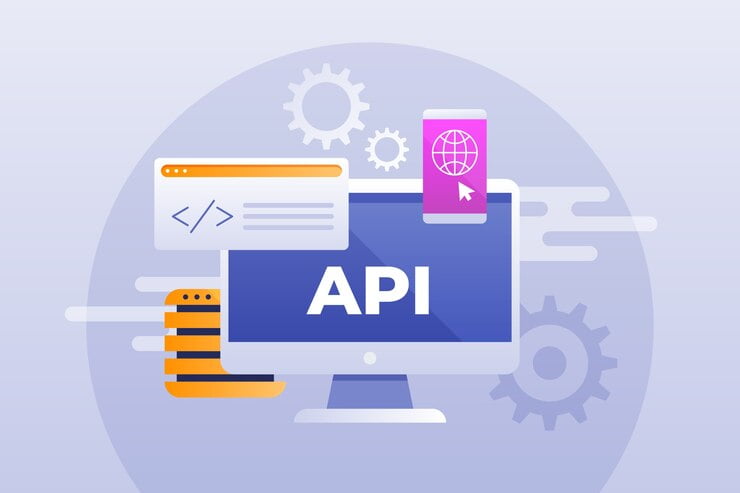Here’s an example of how you can implement machine learning model linear regression using Python:
import numpy as np
from sklearn.linear_model import LinearRegression
# Example dataset
X = np.array([[1], [2], [3], [4], [5]]) # Input features
y = np.array([2, 4, 6, 8, 10]) # Target values
# Create a linear regression model
model = LinearRegression()
# Train the model
model.fit(X, y)
# Predict using the trained model
X_test = np.array([[6], [7], [8]]) # New input features for prediction
y_pred = model.predict(X_test)
print("Predicted values:", y_pred)
In this example, we first import the necessary libraries: numpy for numerical computations and LinearRegression from the sklearn.linear_model module for the linear regression model.
Then, we define the input features (X) and target values (y) for our dataset. In this case, we have a simple example with one-dimensional input features and target values. However, the code can be extended to handle multiple features and targets.
Next, we create an instance of the LinearRegression model. This model will be used to fit the data and make predictions.
We then train the model using the fit method, which takes the input features X and target values y as arguments. The model will learn the coefficients of the linear equation that best fits the data.
After training the model, we can use it to make predictions on new data. In this example, we create a new array X_test with some test input features and use the predict method of the model to obtain the predicted target values y_pred.
Finally, we print the predicted values.
Note that this is a basic example, and in practice, you would typically preprocess the data, split it into training and test sets, and evaluate the model’s performance using appropriate metrics. Additionally, there are various techniques for handling more complex scenarios, such as regularization and feature scaling, which are not covered in this simple code snippet.
Here’s an advanced-level implementation of linear regression that includes data preprocessing, splitting into training and test sets, evaluation using metrics, and feature scaling:
import numpy as np
from sklearn.model_selection import train_test_split
from sklearn.linear_model import LinearRegression
from sklearn.preprocessing import StandardScaler
from sklearn.metrics import mean_squared_error, r2_score
# Example dataset
X = np.array([[1], [2], [3], [4], [5]]) # Input features
y = np.array([2, 4, 6, 8, 10]) # Target values
# Split the dataset into training and test sets
X_train, X_test, y_train, y_test = train_test_split(X, y, test_size=0.2, random_state=42)
# Standardize the features
scaler = StandardScaler()
X_train_scaled = scaler.fit_transform(X_train)
X_test_scaled = scaler.transform(X_test)
# Create a linear regression model
model = LinearRegression()
# Train the model
model.fit(X_train_scaled, y_train)
# Predict on the test set
y_pred = model.predict(X_test_scaled)
# Evaluate the model
mse = mean_squared_error(y_test, y_pred)
r2 = r2_score(y_test, y_pred)
print("Mean Squared Error:", mse)
print("R-squared Score:", r2)
In this advanced-level code, we’ve added the following enhancements:
- Data Preprocessing: The input features
Xare standardized usingStandardScalerfrom thesklearn.preprocessingmodule. This scales the features to have zero mean and unit variance, which can help improve the performance of the linear regression model. - Train-Test Split: The dataset is split into training and test sets using
train_test_splitfrom thesklearn.model_selectionmodule. This allows us to evaluate the model’s performance on unseen data. In this example, we’ve used a test size of 0.2, which means 20% of the data will be used for testing, and the remaining 80% will be used for training. - Evaluation Metrics: We calculate two metrics to evaluate the model’s performance on the test set. The mean squared error (
mse) measures the average squared difference between the predicted and actual target values. The R-squared score (r2) represents the proportion of the variance in the target variable that is predictable from the input features.
By including these enhancements, you can build a more robust and accurate linear regression model. Remember to adapt the code to your specific dataset and requirements.
import pandas as pd
from sklearn.model_selection import train_test_split
from sklearn.preprocessing import StandardScaler
from sklearn.linear_model import LinearRegression
# Read data from a CSV file
df = pd.read_csv('data.csv')
# Convert date/time columns to datetime format
df['date'] = pd.to_datetime(df['date'])
df['time'] = pd.to_datetime(df['time'])
# Extract features from date/time
df['year'] = df['date'].dt.year
df['month'] = df['date'].dt.month
df['day'] = df['date'].dt.day
df['hour'] = df['time'].dt.hour
df['minute'] = df['time'].dt.minute
# Split data into features and target
X = df[['year', 'month', 'day', 'hour', 'minute']]
y = df['target']
# Split data into training and testing sets
X_train, X_test, y_train, y_test = train_test_split(X, y, test_size=0.2, random_state=42)
# Normalize the features
scaler = StandardScaler()
X_train_scaled = scaler.fit_transform(X_train)
X_test_scaled = scaler.transform(X_test)
# Train a machine learning model
model = LinearRegression()
model.fit(X_train_scaled, y_train)
# Make predictions on the test set
predictions = model.predict(X_test_scaled)
# Evaluate the model
score = model.score(X_test_scaled, y_test)
print("Model score:", score)




Pingback: Statistical problems and solution in data science with example